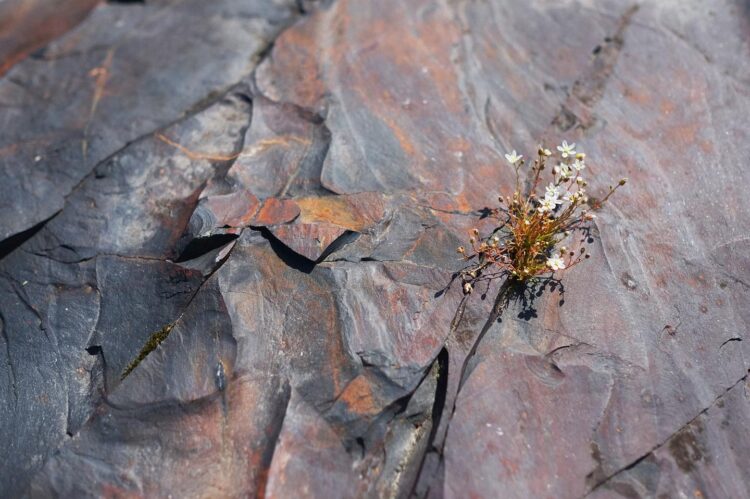Research on Russian drill core challenges long-standing models of oxygenation on Earth

Credit: K. Paiste.
Earth may have been far more oxygen-rich early in its history than previously thought, setting the stage for the evolution of complex life, according to new research by scientists at the University of Alberta and the University of Tartu in Estonia. The study provides evidence for elevated oxygen levels 2 billion years ago and flies in the face of previously accepted models.
The international team of researchers, led by UAlberta scientists, studied a Russian drill core containing shungite–a unique carbon-rich sedimentary rock deposited 2 billion years ago. The material provides several clues about oxygen concentrations on Earth’s surface at that time, including strikingly high levels of molybdenum, uranium, and rhenium, as well as elevated uranium isotope ratios.
“These trace metals are only thought to be common in Earth’s oceans and sediments when oxygen is abundant,” explained Kaarel Mänd, a PhD candidate in the University of Alberta’s Department of Earth and Atmospheric Sciences and lead author of the study. “These trace metal concentrations are unrivaled in early Earth’s history, suggesting elevated levels of oxygen at the time when the shungite was deposited.”
What’s puzzling, Mänd explained, is that many widely accepted models of Earth’s carbon and oxygen cycles predict that shungite should have been deposited at a time of rapid decrease in oxygen levels.
“What we found contradicts the prevailing view,” says Mänd, who is completing his PhD under the supervision of Professor Kurt Konhauser. “This will force the Earth science community to rethink what drove the carbon and oxygen cycles on the early Earth.”
The new findings also provide insight into the evolution of complex life. Earth’s “middle age” represents the backdrop for the appearance of eukaryotes. Eukaryotes are the precursors to all complex life, and require high oxygen levels in their environment to thrive. This study strengthens the idea that suitable conditions for the evolution of complex life on early Earth began much earlier than previously thought.
Future research will examine the delay between the initial rise of oxygen and the appearance and spread of eukaryotes, remaining an area of active research, one that University of Alberta and University of Tartu researchers are well positioned to help answer.
###
This research was funded by the Archimedes Foundation, the Estonian Research Council, the Natural Sciences and Engineering Research Council of Canada (NSERC), and the Research Council of Norway.
This paper, “Paleoproterozoic oxygenated oceans following the Lomagundi-Jatuli Event,” was published in the journal Nature Geoscience (doi: 10.1038/s41561-020-0558-5).
Media Contact
Katie Willis
[email protected]
Original Source
https:/
Related Journal Article
http://dx.





